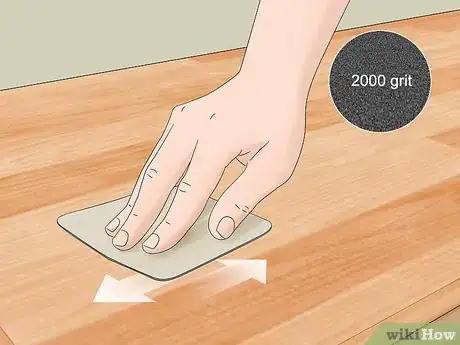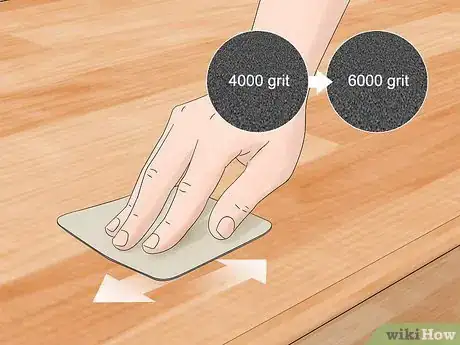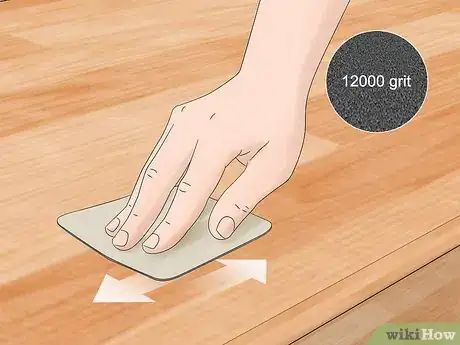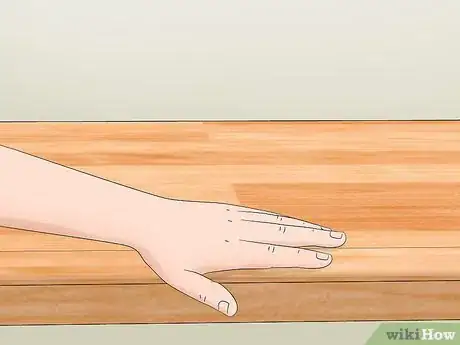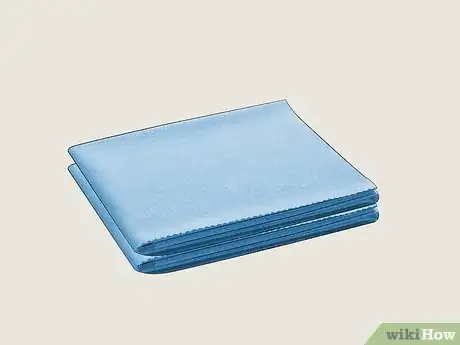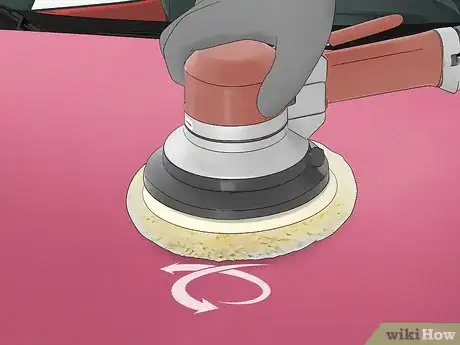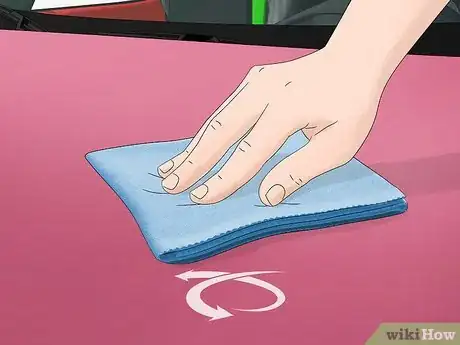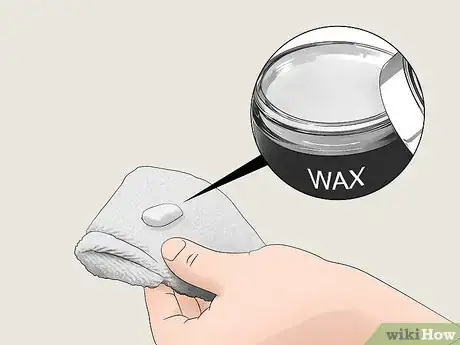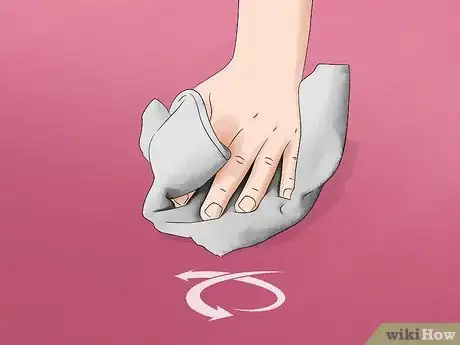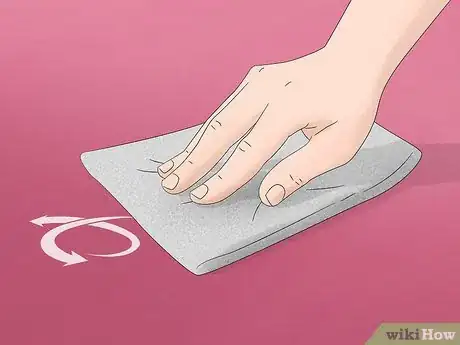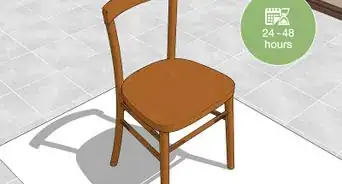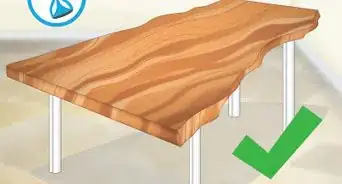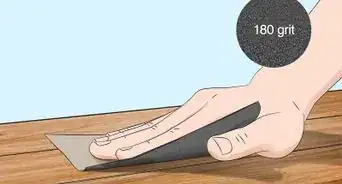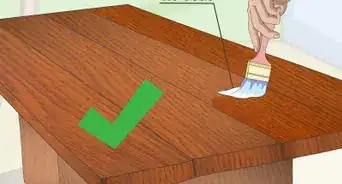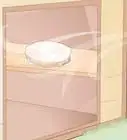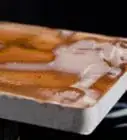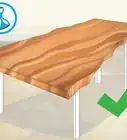This article was co-authored by wikiHow staff writer, Janice Tieperman. Janice is a professional and creative writer who has worked at wikiHow since 2019. With both a B.A. and M.A. in English from East Stroudsburg University, she has a passion for writing a wide variety of content for anyone and everyone. In her free time, you can find her working on a new crochet pattern, listening to true crime podcasts, or tackling a new creative writing project.
There are 15 references cited in this article, which can be found at the bottom of the page.
This article has been viewed 25,052 times.
Learn more...
Lacquer paint is commonly used on guitars, cars, tables, and other projects. If you’re working on a wooden project, you’ll first need to sand down any imperfections with micro-mesh or finishing paper. If you’re polishing a car, you can immediately skip to polishing, which can be done with a special cloth or handheld polisher. While it can be time-consuming to polish your lacquer, this process will help you create a beautiful final product.
Steps
Restoring and Polishing Wood Surfaces
-
1Rub the lacquer with coarse- or medium-grit micro-mesh. Examine your lacquered surface and look for any obvious blemishes or scratches. If the surface is covered with pretty obvious marks, use a piece of 2000-grit or so micro-mesh to buff the surface. Work in short, vertical movements, keeping the micro-mesh moving in the same direction as you go.[1]
-
2Switch to a finer grit to continue smoothing out the surface. Grab a piece of micro-mesh that’s around 4000-grit or so. As you did before, rub down the lacquer in short, vertical motions. After rubbing the entire surface, continue switching to a higher grit, like 6000. Keep alternating your micro-mesh sheets and rubbing the surface of the lacquer until the scratches and blemishes are barely visible.[4]
- Using different grits helps make your polishing job look more even.
Advertisement -
3Buff the surface with a very fine-grit micro-mesh. Choose a smooth, 12,000- or so grit sheet and rub in short, vertical strokes along the surface of your lacquer. Try to buff away any remaining marks or scratches so the lacquer can look as smooth and flawless as possible.[5]
-
4Touch the surface to check for any blemishes. Look for obvious scratches and marks that you can detect with your fingertips. Additionally, examine the lacquer to make sure that it’s completely smooth and reflective.[6]
- You don’t want there to be any visible scratches once you apply the polish.
Handheld Sander Alternatives
If you have a handheld sander, you can use it to polish your wood lacquer. Similar to the micro-mesh process, use a 2000-grit sanding pad to expose any scratches in the lacquer, then spray a 3000-grit pad with water. Use this soaked pad to buff the entire surface of your project. Once you’ve finished sanding, switch out your sanding pad with a wool pad. Squeeze a grape-sized amount of ceramic polish onto the pad, then buff it into the lacquer at a low speed (less than 1000 RPM). After you’ve finished this, use foam pads and a small amount of ceramic polish to finish buffing and restoring the wood surface. As a finishing touch, clean the surface with a water-based cleaning spray and polishing surface.[7]
Buffing and Waxing Car Exteriors
-
1Install a correcting foam polishing pad into a mechanical polisher. Search online or in an auto supply shop for a round, bumpy foam pad designed for correcting or polishing. Slide this pad onto your the base of your polisher to secure it in place.[8]
- Check the user manual for your polisher if you aren’t sure how to add a new pad.
- Foam pads help to polish the surface without causing abrasions.
-
2Use a polishing cloth if you’re buffing the lacquer by hand. Shop online or in a car supply shop for a special polishing cloth. Don’t use a microfiber cloth for your polishing projects, as the fibers may scratch the surface of your lacquer. Instead, purchase a smooth, soft towel or cloth that’s specifically designed for polishing work.[9]
-
3Spread a pea-sized amount of correcting polish on the lacquer. Add the polish to the specific area or corner that you plan on polishing. If you’re buffing a large surface, you can use extra polish as needed for other sections of lacquer.[10]
- If you’re using a polisher, feel free to apply the polish directly to the foam pad.
- You can purchase polish online, or at a hardware or home improvement store. Ask a store associate for help if you need specific recommendations for a project.
-
4Rub the polish into the lacquer using slow, careful motions. If you’re using a polishing cloth, take a small section of the cloth and rub over the polish carefully. Move it in slow, circular motions to spread the polish and buff the surface. If you’re using a mechanical polisher, set the tool to a relatively slow speed (e.g., machine speed 4), and move it in vertical or horizontal lines to spread the polish.[11]
Did you know? Some lacquer polishes come in different textures, which helps provide a well-rounded polish for specialty projects, like guitars. After buffing a medium-level polish into the lacquer, feel free to follow up with an extra-fine-level polish as well![12]
-
5Wipe down the surface with a bare polishing cloth. Rub the surface in even, circular motions, smoothing out any excess polish into the lacquer. Continue buffing the surface until it looks reflective and smooth![13]
-
6Scoop a grape-sized amount of paste wax onto a lint-free cloth. Use your hands to squeeze the wax so it can soften and apply more easily to the car. Depending on the size of your vehicle, you may need to use more or less wax to cover your desired surface.[14]
-
7Rub the wax into the lacquered surface. Move the cloth in straight or circular motions, depending on what you prefer. Work in small sections at a time, making your way from 1 side of the surface to the other. If the wax begins to dry, rub in a new layer of wax to soften the original.[15]
- It doesn’t matter how you rub the wax, as long as you’re consistent.
-
8Use a lint-free cloth to wipe away any leftover wax. Work in small sections, wiping in either straight or circular motions to pick up the excess. Go from one side to the other so you can keep track of the area that you’ve wiped.[16]
-
9Polish the surface with a clean buffing cloth. Take a new cloth and rub over the waxed lacquer of your car. Work in straight or circular motions—just make sure you’re being consistent, so the surface looks even and smooth.[17]
Warnings
- Don’t pour water on the surface of your lacquer when you go to sand it, as this may cause your lacquer to crack.[18]⧼thumbs_response⧽
Things You’ll Need
Restoring and Polishing Wood Surfaces
- Micro-mesh, multiple grits
- Wood block
- Sandpaper (optional)
Buffing and Waxing Car Exteriors
- Handheld polisher
- Correcting foam pad
- Correcting polish
- Polishing cloth
- Paste wax
- Lint-free cloth
References
- ↑ https://m.youtube.com/watch?v=AYuXGJRoMt0&t=2m47s
- ↑ https://www.stewmac.com/How-To/Online_Resources/Learn_About_Instrument_Finishing_and_Finish_Repair/Wet-sand_before_buffing.html
- ↑ https://m.youtube.com/watch?v=AYuXGJRoMt0&t=2m47s&t=2m37s
- ↑ https://m.youtube.com/watch?v=AYuXGJRoMt0&t=4m40s
- ↑ https://m.youtube.com/watch?v=AYuXGJRoMt0&t=4m10s
- ↑ https://m.youtube.com/watch?v=GkQCtfeK6Eo&t=1m43s
- ↑ https://m.youtube.com/watch?v=GkQCtfeK6Eo&t=0m50s
- ↑ https://m.youtube.com/watch?v=_1VKs5zgYOs&t=1m35s
- ↑ https://m.youtube.com/watch?v=AYuXGJRoMt0&t=6m17s
- ↑ https://m.youtube.com/watch?v=AYuXGJRoMt0&t=6m14s
- ↑ https://m.youtube.com/watch?v=_1VKs5zgYOs&t=2m22s
- ↑ https://m.youtube.com/watch?v=AYuXGJRoMt0&t=6m5s
- ↑ https://m.youtube.com/watch?v=AYuXGJRoMt0&t=7m43s
- ↑ http://antiquerestorers.com/Articles/SAL/pastewax.htm
- ↑ http://antiquerestorers.com/Articles/SAL/pastewax.htm
- ↑ http://antiquerestorers.com/Articles/SAL/pastewax.htm
- ↑ http://antiquerestorers.com/Articles/SAL/pastewax.htm
- ↑ https://m.youtube.com/watch?v=AYuXGJRoMt0&t=2m13s
